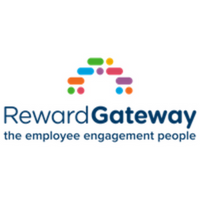7 deadly sins of reward communication
In the world of comms, our techniques and tricks move forward so often with all of us trying to make sure our current campaigns are better than our last, so it is true that my list is due for an update.

Behind all of this, the drive behind our communications stays the same - to try and get our employees to know, use and love our reward offering. So here’s my list of top things to avoid on your path to flawless reward communication.
1. Too much going on
Still so true with many promotions I see - information overload! Our desire to tell our employees everything that is great about what we offer them can sometimes result in us stocking our comms with far too much. Posters, flyers and emails are produced where the designer has tried to squeeze a little bit of everything into one small space. A great intention that ultimately leaves our employees confused and a little bit put off.
The purpose of our communications should not be to tell the employee everything, but rather to simply tell them enough to get them to where we want them to go. Most of our reward initiatives are wrapped up in lovely web packages or hosted on intranets. Why are we trying to double the effort when we only need to include the juicy basic details, and everything else will be revealed when they get there?
2. Unnecessary phone numbers
This one goes hand in hand with point 1… So many employee communications feature a telephone number so that the employee can call for help if needed. But when our rewards packages are hosted online, surely this is a confusing call-to-action?
We’ve run an in-house employee helpdesk for 10 years and in all that time I don’t think we’ve ever received a call from someone who wasn’t already on the website. If you’re advertising a web based product, don’t waste valuable space listing an unnecessary phone number. Your website address should be your action point.
3. QR Codes
We all know that the digital revolution has been and gone, so we’re desperately looking for ways to make our communications more accessible for web and smartphones.
The QR code has become really popular, but the simple fact is that it just doesn’t work. It takes too long to scan and most smartphones on the market don’t actually have a QR code reader built in, so using a QR code is simply creating another barrier between your employees and your rewards.
As a quick test of this, ask yourself when you last actually scanned a QR code, or when you last saw someone scan a QR code. As long as your URL isn’t hideously long, it will always be far simpler for your employees to simply type it directly into their web browser.
4. Change for change’s sake
Almost as bad as no innovation is the change implemented just to show you have changed something. We are constantly being shown new ‘cool’ and ‘unusual’ tools that are supposedly the next big step forward in internal comms, but whenever you’re tempted to grab onto one of these ideas it is always important to ask yourself if it is really right for your organisation?
A great example of this is the recent push of augmented reality - which I’ve still not seen proven to actually move the needle in the long term.
If you have a strategy that is proven to work, build on it and if you do need to change something make sure you’re doing it for the right reasons. Look at what your objectives are and make sure your choices are helping you achieve those goals.
5. Over-use of printed media
Printed media definitely has a place in our reward strategies, but far too often I see people using this as a crutch. Posters, flyers, payslips, postcards – these are all of the easy, safe options. We know what to do, we know how to do it, so we keep on doing it regardless of whether it’s right.
In 2016 the average employee is going to be far more connected to us digitally than elsewhere. As our organisations grow the poster becomes less feasible, less reliable, while the often used flyer is as expensive as it is forgettable.
We need to be investing our time and resources in getting better at digital, whether that is via email, SMS, video or social media. And when we do decide to invest in printed media we need to make sure it is working hard for us. When you consider the costs of production, printing, distribution and coordination of a printed promotion, you want to make sure it’s going to last you a while, not need to be redone again next week.
6. Seasonal tie-ins
This month I’ve seen a lot of Easter- and spring-related tie-ins on reward promotions: “Tell someone they’re egg-cellent!”; “Get an egg-stra special reward”. Why do we do this?
When you’re tempted to use a seasonal message as part of your communication strategy you need to take a moment to sit back and really ask yourself if it makes sense. If it doesn’t, it’s cheesy and cheap and our employees can see right through it.
That’s not to say that seasonal messaging is always wrong, sometimes it can work beautifully - for example I can think of no better time to advertise your employee discounts platform than in the Christmas shopping period. However if it doesn’t work, skip it and work on messaging that is actually going to break down barriers to engagement.
(Needless to say, your seasonal message should almost never feature in your printed media.)
7. Competitions
An old favourite, a competition is often a staple of many employee communication strategies, especially when launching something new. However, as you might already have guessed, I’d like to make an argument to say that the use of competitions is actually detrimental to your employee engagement.
When we use competitions, we’re trying to prompt a call to action or trying to get someone to do something now rather than later. But at the same time, we’re also selling ourselves short. We’re not telling the employee why the reward or benefit is good for them, and we’re definitely not encouraging them to embrace it. Instead we’re just tempting them as far as the starting line in return for a potential prize and many of them will not even both to go on past this point.
In the worst case scenarios, those that don’t win might even find this let-down a deterrent to stop them using the programme at all. Pretty much the last thing we’re trying to achieve.
This blog was supplied by Reward Gateway.
In partnership with Reward Gateway
We help the world's leading companies with an employee engagement platform.







